
to the virtual museum



Marcel Louis L'Enfant was born in Paris on December 8th, 1884. His father, Philippe Charles L'Enfant, was a commercial employee, and Léocadie Eugénie Cattez, his mother, was a seamstress. He died on January 25th, 1963 in Franconville. To learn more about his origins, you can read this article. We found some early works from his adolescence which tend to show that his job was a true vocation.

He met Jeanne Baudin, an accountant for a Maritime Life Insurance Company, in 1907, shortly after his mother's death. They married in 1910 and moved to Franconville in 1923, where the painter set up his workshop.
Among his work, many portraits can be found of his spouse and muse, with whom he lead a very discreet and simple life but never had children.
During the last years of his life, he had some troubles practicing his art because he was going blind.
He died in his house in 1963, as quietly as he had lived, at the age of 78. It wasn't very long until Jeanne rejoined him, as she passed only two years later.
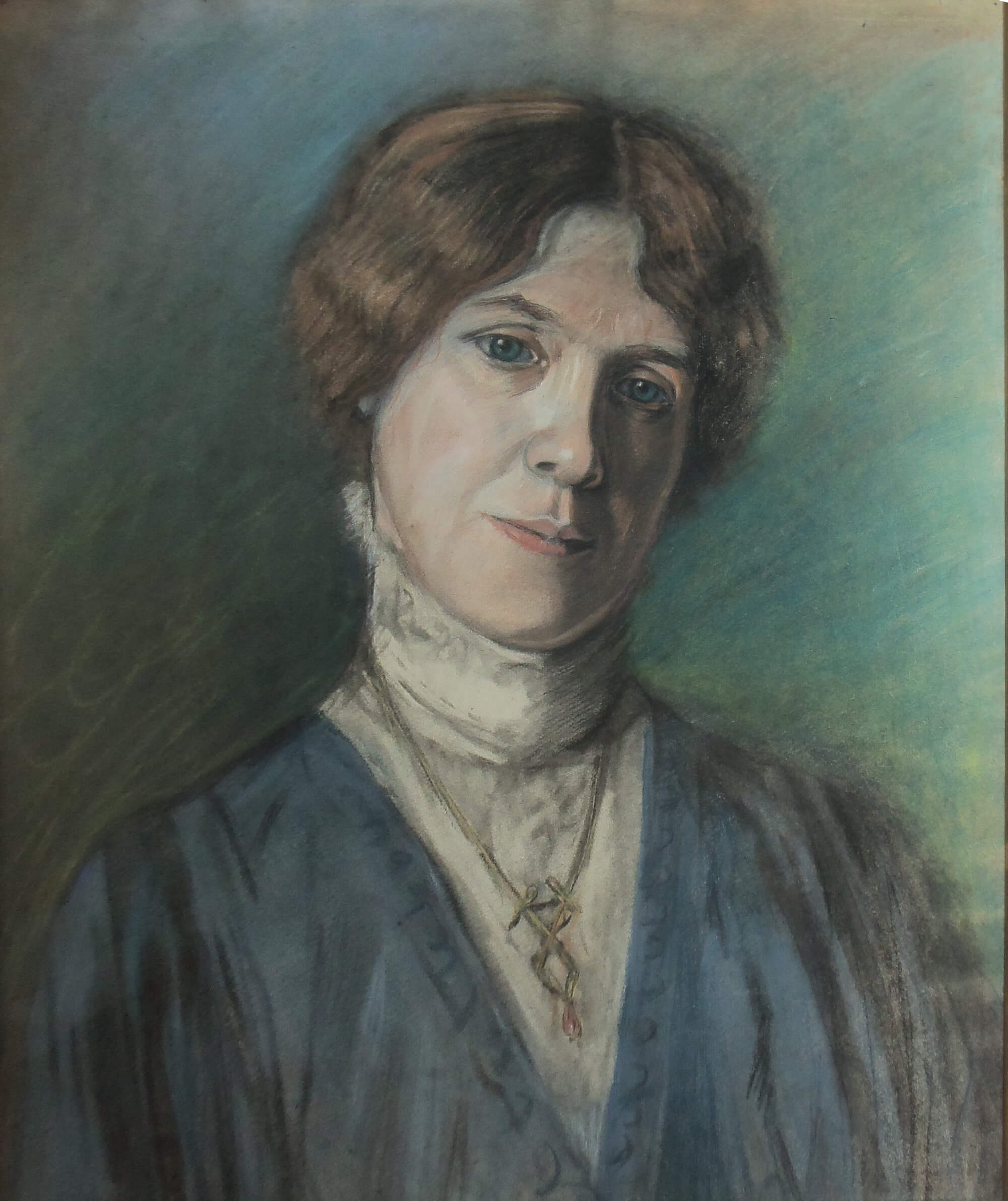

Marcel L'Enfant was a student of Edmond Eugène VALTON (1836-1910), teacher at the Germain Pilon School of Art*, who was also president of the Société des Artistes Indépendants from 1889 to 1908. Incidentally, Marcel L'Enfant attended the "Salon des Indépendants" from more than 50 years, starting in 1906, as well as many other art exhibitions in Paris, in the provinces and even abroad.
You can find here a list of some of the works he exhibited at the "Salon" over the years.
One oh his paintings was acquired by the State but it disappeared from the National Archives. The painter was also featured on the Bénézit Dictionary of Artists from 1948 to 1976.
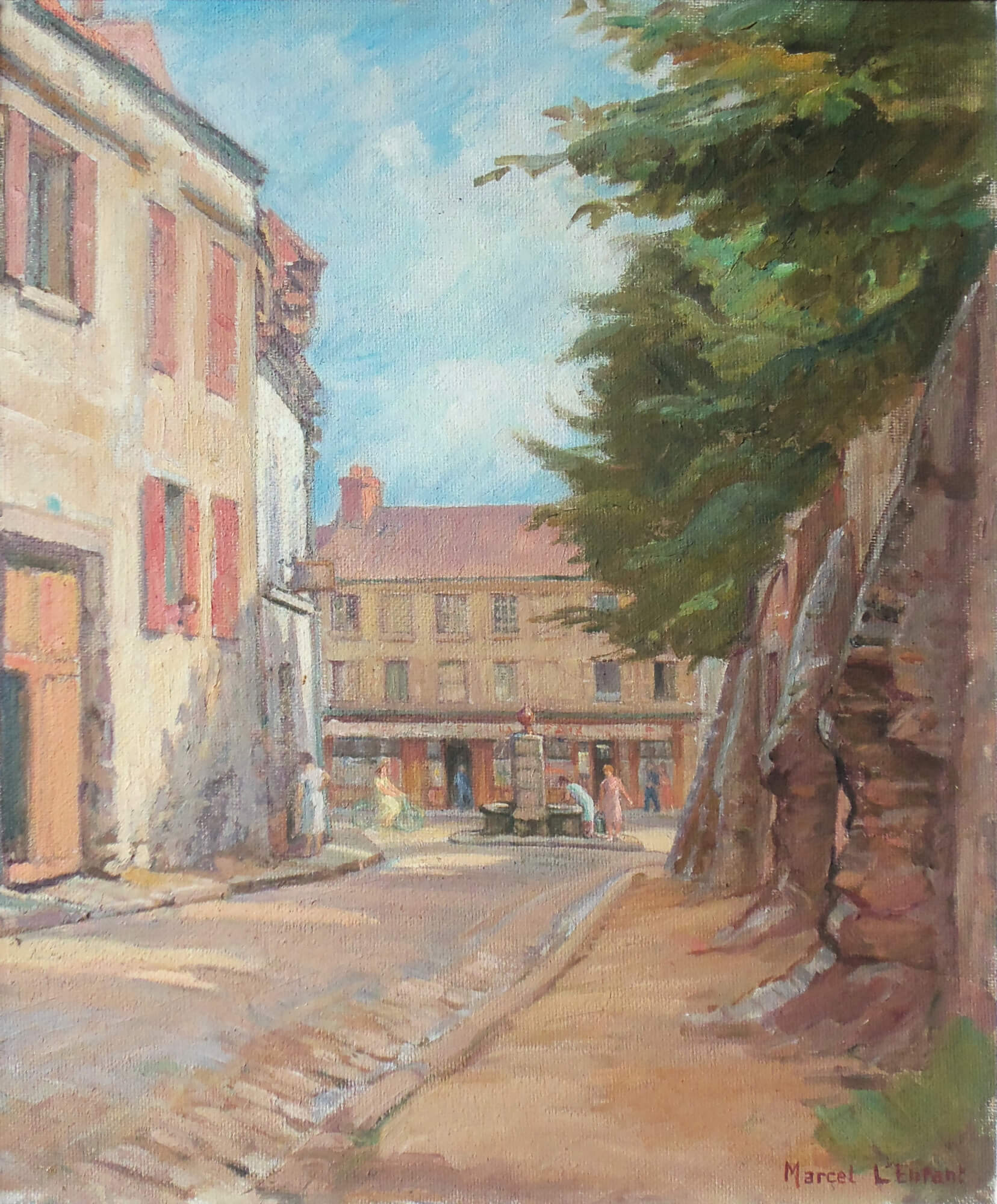
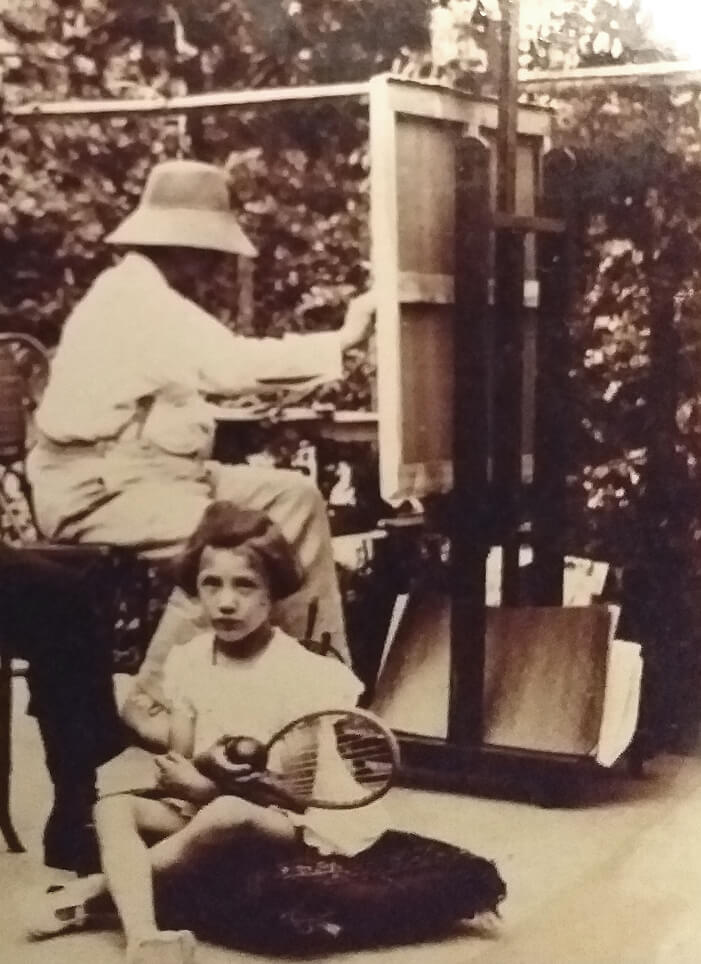
For more than 40 years, Marcel L'Enfant has practiced his art and passion from his workshop, "Le Buisson", located 133 (later 227) Chaussée Jules César in Franconville. It was in this peaceful and poetic place, with his wife at his side, that he painted most of the time.
He used to sketch a large number of designs outdoors, and then reproduce on canvas what he'd seen and felt, from his home. In this photograph, you can see him at work in his garden, his face hidden in the shadow of his hat. You can see some of his sketches and drafts here.
He lead a simple life with his beloved wife and never looked for fame and glory. The only thing that mattered to him in his work was to make good art and to enjoy the process.
And he has done so for more than 60 years! Thousands and thousands of pieces were born under his brushes and pencils. The ones featured on this website are but a sample of them.
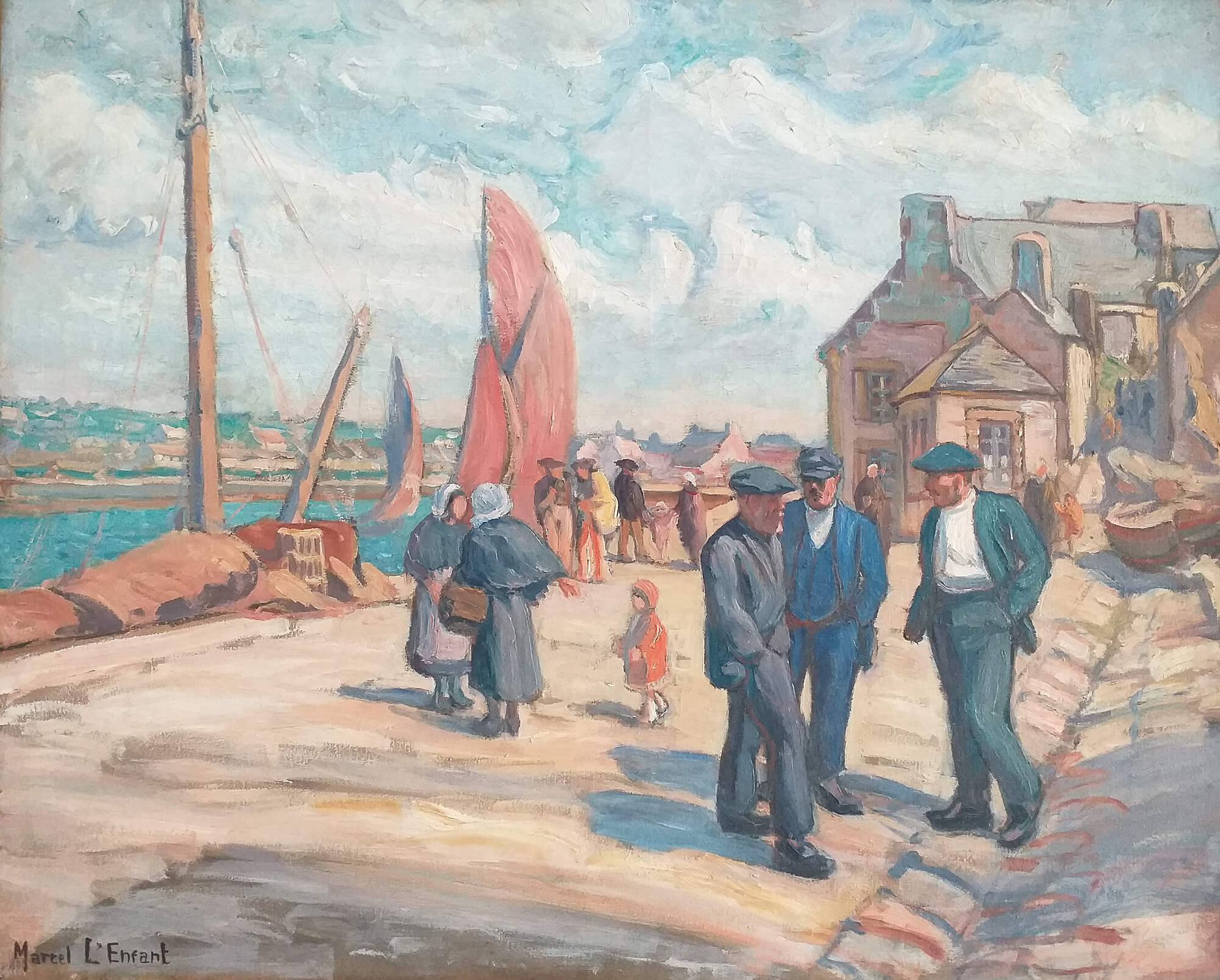
Throughout his long career, he painted on a vast diversity of themes, but it seems obvious from what we know of his works that he favored the ocean. He particularly enjoyed depicting Breton ports and Breton fishing boats at sea, with their changing skies and their picturesque atmosphere.
From his trips to the South were also created many pieces depicting colorful scenes with vivid and warm tones.
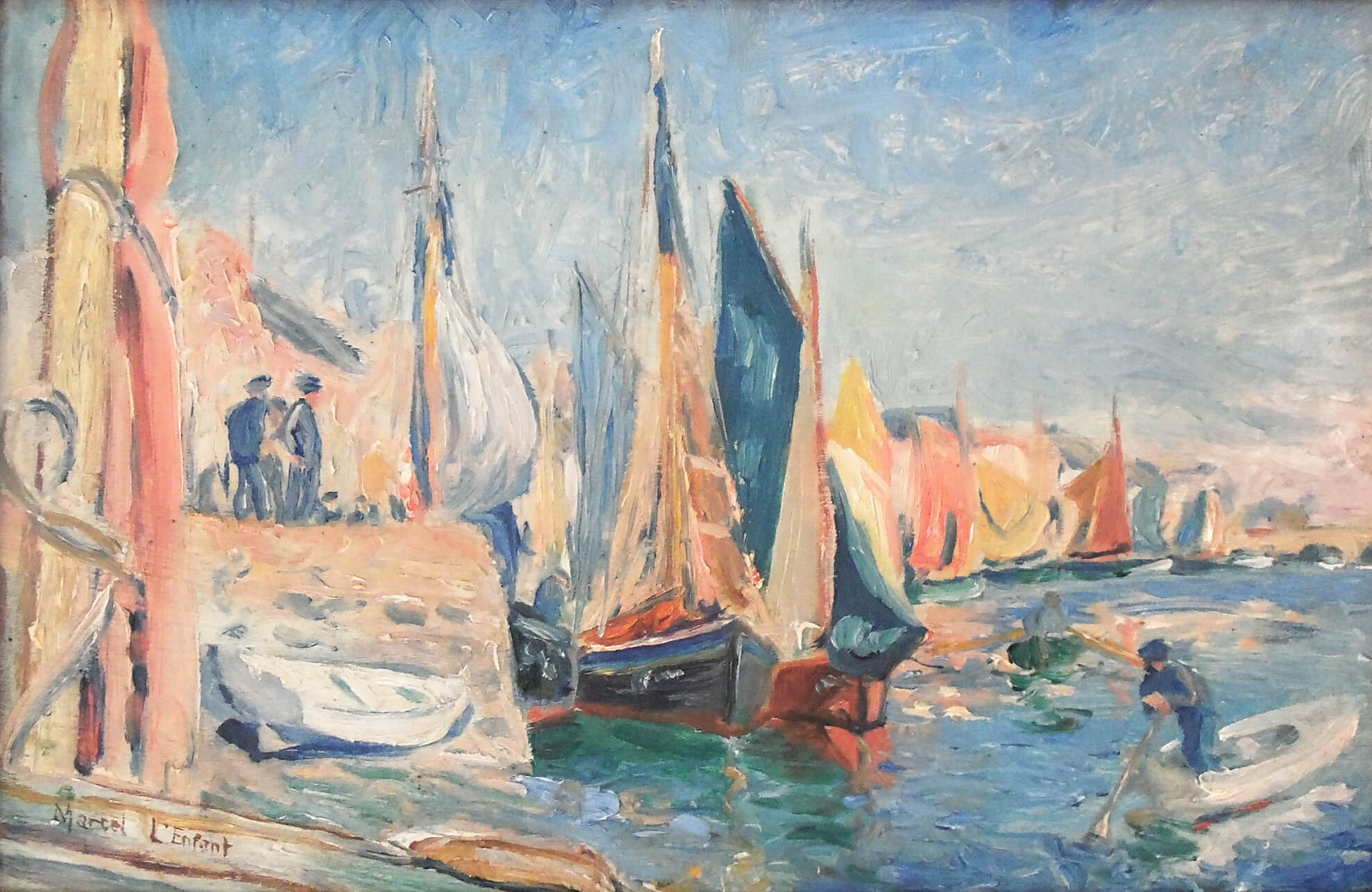
His talent to bring his subjects to life on canvas by depicting characters in motion, using different techniques and shapes to give relief to his work, and his amazing and masterful use of colors to render the variations of light, link him to the Post-Impressionnism movement.
Here is what Mr. Eugène Hoffmann - son of painter François Hoffmann, reknown art critic and founder of the "Livre d'or des peintres-exposants" (forerunner to the Benezit) - wrote about Marcel L'Enfant around 1935 :
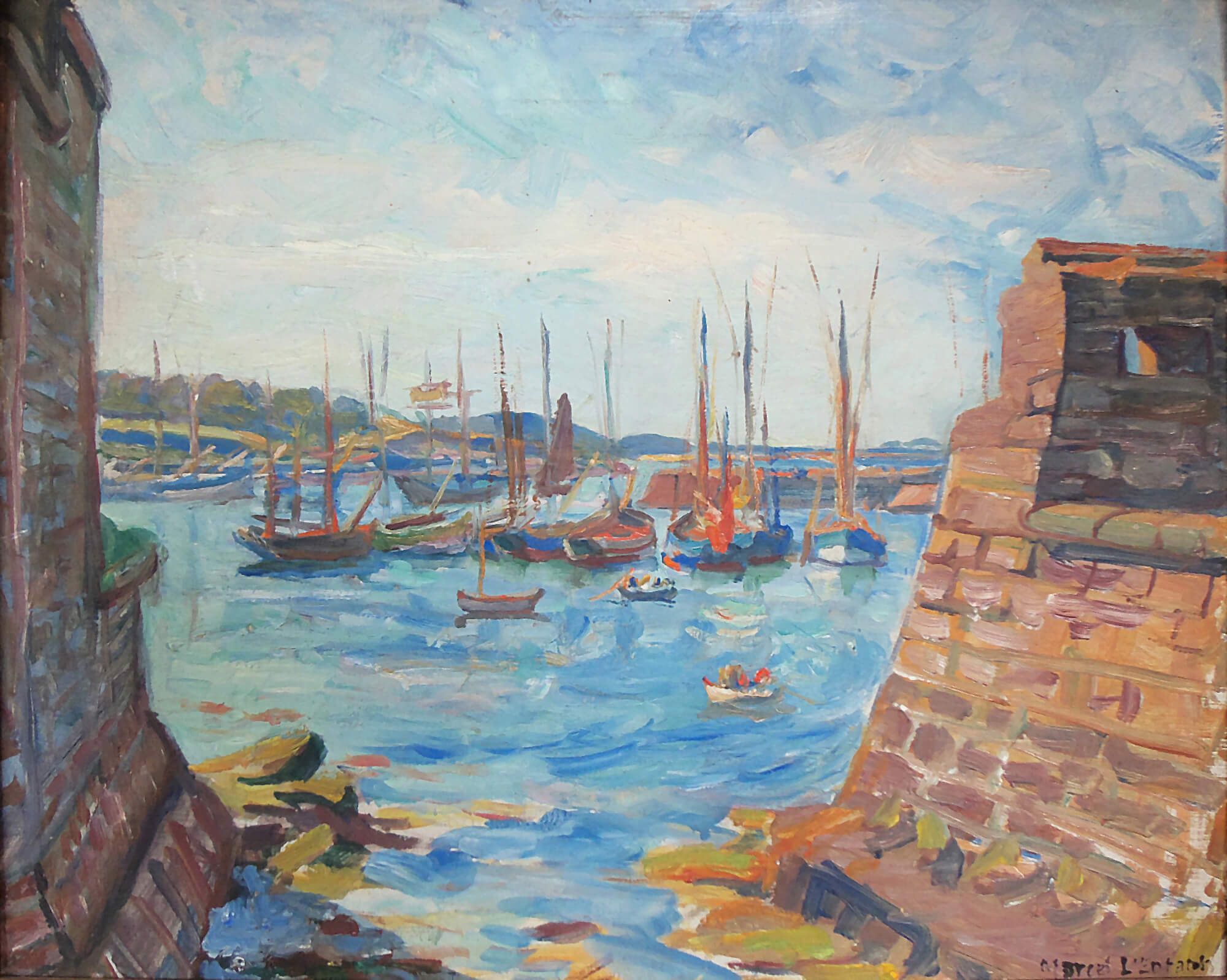
« The painter adapts with remarkable flexibility to the different atmospheres to bring out the nature, the backbone and the soul of each of these diverse sceneries. The artist's accute sensitivity builds on the knowledge Marcel L'Enfant has of his art, which no longer holds any secret for him. This is, I believe, the key to his success with the public.
He ranks among the best contemporary marinists, creating harmonious and well-balanced color effects without ever crossing the customary line towards bad taste. This indicates a sensible mind, a mastery brush, in short a well-balanced talent. We appreciate the masterful endeavour of a sincere artist whose work remains most interesting to browse and analyse in all its details.
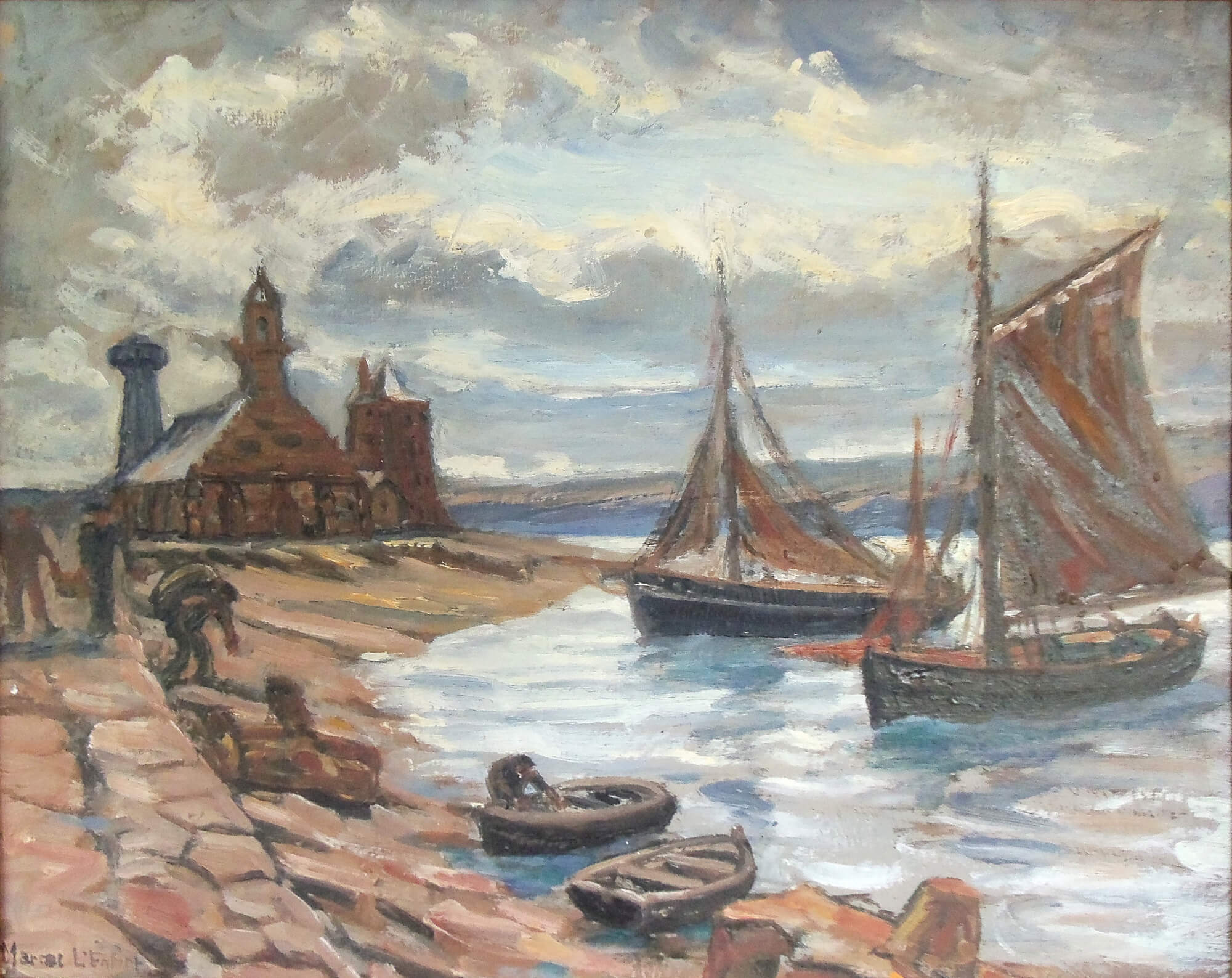
* Merged in 1925 with other art schools to become "l'École Nationale Supérieure des Arts Appliqués et des Métiers d'Art".